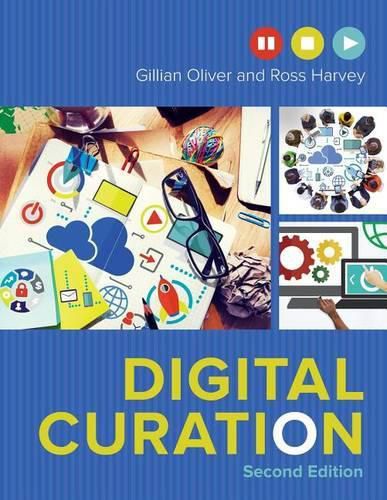Readings Newsletter
Become a Readings Member to make your shopping experience even easier.
Sign in or sign up for free!
You’re not far away from qualifying for FREE standard shipping within Australia
You’ve qualified for FREE standard shipping within Australia
The cart is loading…






This title is printed to order. This book may have been self-published. If so, we cannot guarantee the quality of the content. In the main most books will have gone through the editing process however some may not. We therefore suggest that you be aware of this before ordering this book. If in doubt check either the author or publisher’s details as we are unable to accept any returns unless they are faulty. Please contact us if you have any questions.
As an in-depth explanation of the entire digital curation lifecycle, from creation to appraisal to preservation to organization/access to transformation, the first edition of this text set a benchmark for both thoroughness and clarity. Boasting the expert guidance of international authorities Oliver and Harvey, this revamped and expanded edition widens the scope to address continuing developments in the strategies, technological approaches, and activities that are part of this rapidly changing field. In addition to current practitioners, those pursuing a career as librarian, archivist, or records manager will find this definitive survey invaluable. Filled with up-to-date best practices, it covers such important topics as the scope and incentives of digital curation, detailing Digital Curation Centre’s (DCC) lifecycle model as well as the Data Curation Continuum; key requirements for digital curation, from description and representation to planning and collaboration; the value and utility of metadata; considering the needs of producers and consumers when creating an appraisal and selection policy for digital objects; the paradigm shift by institutions towards cloud computing and its impact on costs, storage, and other key aspects of digital curation; the quality and security of data; new and emerging data curation resources, including innovative digital repository software and digital forensics tools; mechanisms for sharing and reusing data, with expanded sections on open access, open data, and open standards initiatives; and processes to ensure that data are preserved and remain usable over time. Useful as both a teaching text and day-to-day working guide, this book outlines the essential concepts and techniques that are crucial to preserving the longevity of digital resources.
$9.00 standard shipping within Australia
FREE standard shipping within Australia for orders over $100.00
Express & International shipping calculated at checkout
This title is printed to order. This book may have been self-published. If so, we cannot guarantee the quality of the content. In the main most books will have gone through the editing process however some may not. We therefore suggest that you be aware of this before ordering this book. If in doubt check either the author or publisher’s details as we are unable to accept any returns unless they are faulty. Please contact us if you have any questions.
As an in-depth explanation of the entire digital curation lifecycle, from creation to appraisal to preservation to organization/access to transformation, the first edition of this text set a benchmark for both thoroughness and clarity. Boasting the expert guidance of international authorities Oliver and Harvey, this revamped and expanded edition widens the scope to address continuing developments in the strategies, technological approaches, and activities that are part of this rapidly changing field. In addition to current practitioners, those pursuing a career as librarian, archivist, or records manager will find this definitive survey invaluable. Filled with up-to-date best practices, it covers such important topics as the scope and incentives of digital curation, detailing Digital Curation Centre’s (DCC) lifecycle model as well as the Data Curation Continuum; key requirements for digital curation, from description and representation to planning and collaboration; the value and utility of metadata; considering the needs of producers and consumers when creating an appraisal and selection policy for digital objects; the paradigm shift by institutions towards cloud computing and its impact on costs, storage, and other key aspects of digital curation; the quality and security of data; new and emerging data curation resources, including innovative digital repository software and digital forensics tools; mechanisms for sharing and reusing data, with expanded sections on open access, open data, and open standards initiatives; and processes to ensure that data are preserved and remain usable over time. Useful as both a teaching text and day-to-day working guide, this book outlines the essential concepts and techniques that are crucial to preserving the longevity of digital resources.